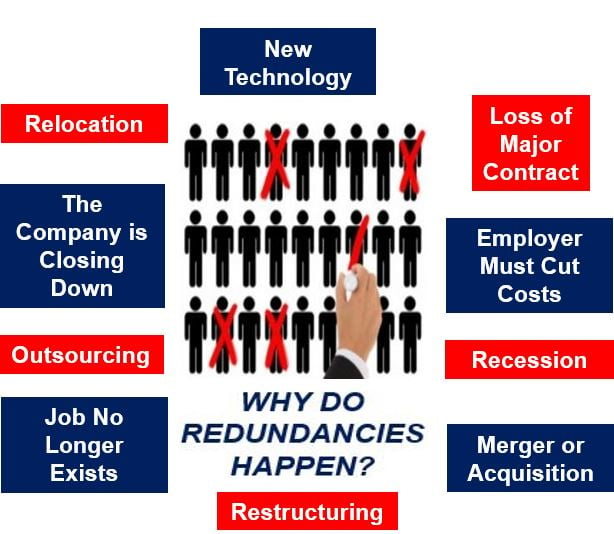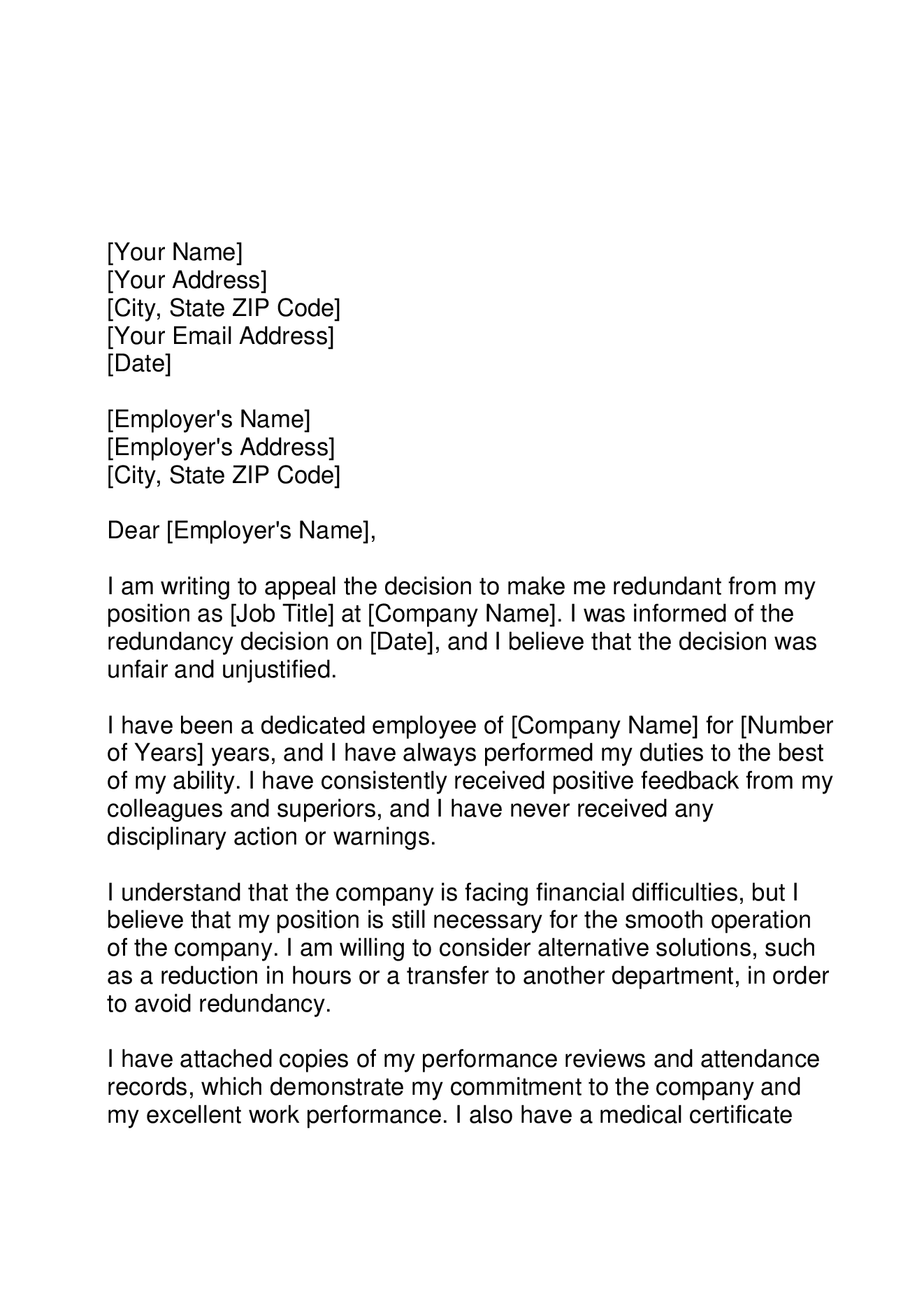How to Deal With Redundancy Pay If Company Goes Bust: Key Information for UK Employees
How to Deal With Redundancy Pay If Company Goes Bust: Key Information for UK Employees
Blog Article
Checking Out the Operational Characteristics of Firm Redundancy and Its Long-Term Sustainability

Redundancy Approaches for Organization Connection
In order to make sure nonstop procedures, services need to apply efficient redundancy strategies for business connection. Redundancy in this context describes the replication of critical elements or functions within a system to minimize the influence of possible failures. By including redundancy techniques, companies can improve their durability versus disruptions brought on by different factors such as all-natural calamities, tools failures, or cyber-attacks.
One usual redundancy strategy is the application of backup systems and data storage options. This entails producing matches of important information and systems that can be activated in case of a primary system failure. Furthermore, companies can establish repetitive communication channels and source of power to maintain connectivity and operations throughout unforeseen occasions.
In addition, cross-training workers to carry out multiple roles within the company can work as an important redundancy approach. This guarantees that necessary jobs can still be executed even if vital personnel are not available because of disease or various other reasons. In general, effective redundancy strategies are vital for businesses to copyright operational continuity and minimize the impact of prospective interruptions.
Influence of Redundancy on Organizational Strength
Provided the vital duty redundancy approaches play in making sure company connection, discovering the influence of redundancy on business strength becomes essential for recognizing the all natural operational characteristics of a company. Business resilience describes an entity's capacity to adapt to disruptions, recuperate from obstacles, and change when needed while preserving core functions. Redundancy, when tactically carried out, can substantially add to boosting an organization's resilience despite unexpected obstacles. By having back-up systems, workers, or processes in position, firms can much better withstand shocks and continue operations with marginal disruption.
In addition, redundancy can bolster employee spirits and confidence, knowing that there are contingency plans in position to resolve unpredicted situations. This complacency can lead to raised productivity and an extra positive work environment. Additionally, redundancy can cultivate innovation and creativity within an organization as workers really feel empowered to take calculated risks, understanding that there is a safeguard to support them in situation of failure. On the whole, the impact of redundancy on business resilience is profound, forming the lasting sustainability and success of a company.
Balancing Efficiency and Adaptability in Redundancy
Achieving a harmonious equilibrium in between operational efficiency and adaptive versatility is a critical challenge in the critical deployment of redundancy within organizations. Effective operations are essential for preserving performance and cost-effectiveness, making certain that resources are made use of optimally. Nonetheless, too much focus on efficiency alone can result in strength, making it challenging for companies to adapt to unanticipated changes or difficulties. On the various other hand, adaptability allows companies to respond nimbly to developing circumstances, cultivating advancement and strength. Yet, excessive versatility without a strong operational foundation can lead to ineffectiveness and disparity.
To stabilize effectiveness and flexibility in redundancy planning, organizations need Source to carefully evaluate their functional requirements, market characteristics, and critical objectives. Executing lean techniques can boost performance by removing and simplifying procedures waste, while cultivating a society of versatility and continual renovation can enhance adaptability. Furthermore, investing in cross-training programs and robust interaction networks can aid cultivate a versatile workforce capable of handling varied jobs throughout periods of transition. Ultimately, discovering the right balance between efficiency and adaptability is essential for building a durable and lasting company when faced with uncertainty.
Long-Term Sustainability Via Redundancy Preparation
To make sure enduring practicality and security, companies have to tactically align their redundancy planning with long-term sustainability goals, thus balancing functional performance with flexible adaptability. Business must view redundancy not as a reactive option to instant troubles yet as an aggressive strategy for long-term success.

Aggressive Procedures for Sustainable Business Workflow
Just how can companies proactively boost their functional sustainability for long-term success? Carrying out aggressive actions is vital for firms aiming to guarantee sustainable procedures. One crucial method is to More Info spend in technology and development to streamline procedures, reduce waste, and remain affordable in the market. Adopting sustainable methods such as lowering power intake, minimizing carbon impact, and maximizing source utilization can not just profit the setting yet additionally lead to set you back financial savings over time.
In addition, fostering a society of constant enhancement and knowing within the company can improve versatility to changing market problems and client demands. Urging employee involvement in decision-making procedures and offering chances for specialist development can enhance morale, performance, and overall performance. Establishing clear goals, monitoring key efficiency signs, and on a regular basis examining progress are important components of aggressive sustainability administration.
Collaborating with i loved this vendors, customers, and other stakeholders to promote sustainable techniques throughout the supply chain can produce a causal sequence of positive influence - redundancy pay if company goes bust. By taking proactive actions towards operational sustainability, companies can construct resilience, drive technology, and protect their lasting success in an ever-evolving service landscape
Verdict

In the world of organizational monitoring, the calculated deployment of firm redundancy stands as a crucial yet complex practice that requires a delicate equilibrium in between functional efficiency and long-lasting stability. By studying the operational dynamics that underpin business redundancy and evaluating its wider implications for organizational resilience and adaptability, a nuanced understanding of exactly how redundancy strategies can shape the future trajectory of a firm begins to unfold.Offered the important role redundancy techniques play in ensuring company connection, checking out the influence of redundancy on organizational durability comes to be necessary for comprehending the holistic operational dynamics of a business. On the whole, the influence of redundancy on business durability is profound, shaping the long-lasting sustainability and success of a firm.
In final thought, recognizing the operational dynamics of company redundancy is vital for guaranteeing lasting sustainability.
Report this page